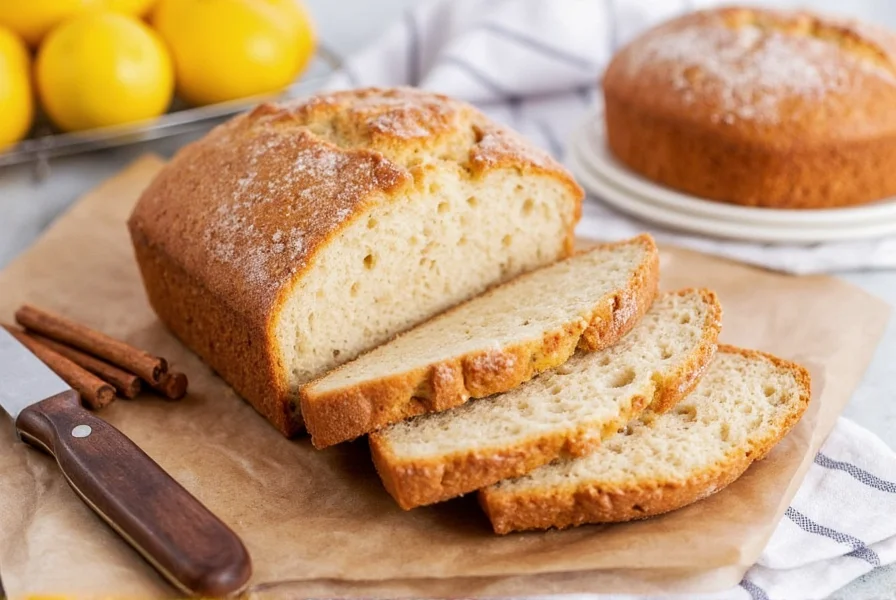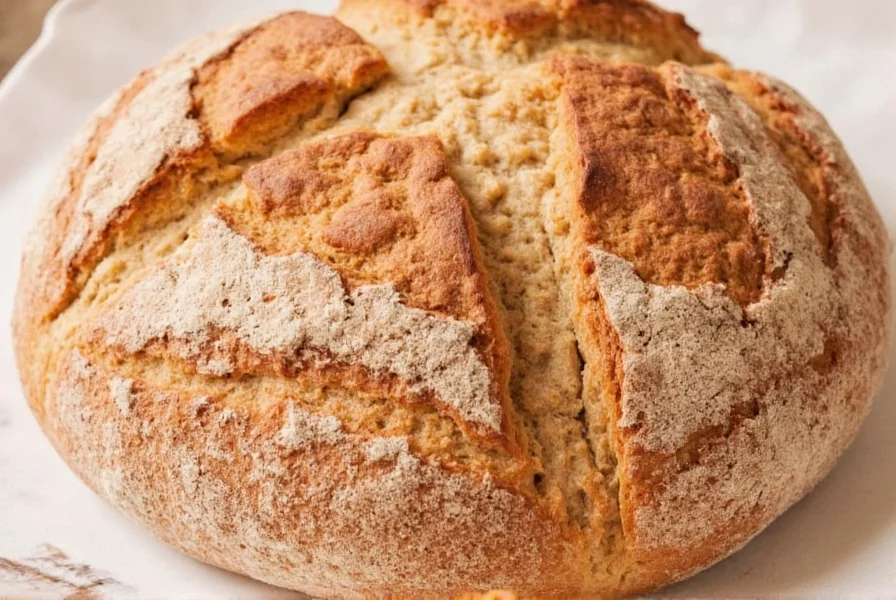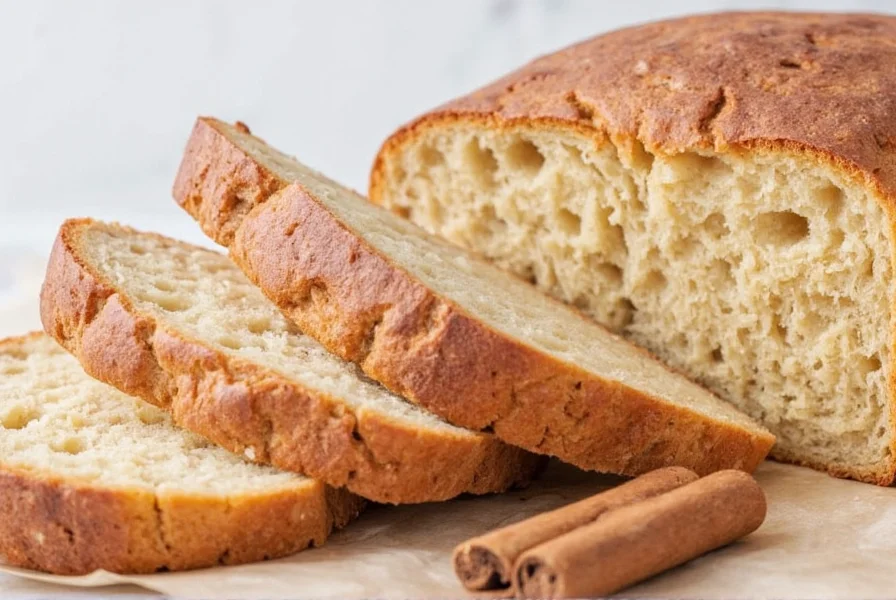For home bakers seeking the perfect cinnamon bread, understanding the balance between dough structure and flavorful filling is essential. The best cinnamon bread recipes create a tender crumb with distinct cinnamon swirls that don't sink to the bottom during baking. Achieving this requires attention to ingredient temperatures, proper kneading technique, and strategic layering of the cinnamon-sugar mixture.
The Origins of Cinnamon Bread
Cinnamon bread traces its roots to Scandinavian baking traditions, particularly Swedish "kanelbulle" (cinnamon bun) culture. While cinnamon rolls remain more popular in the United States, the loaf-style cinnamon bread emerged as a practical alternative for everyday consumption. Unlike rolls which require individual portioning, cinnamon bread offers the same delightful flavors in a more convenient sliced format perfect for toast or sandwiches.
Traditional vs. Modern Cinnamon Bread Variations
While classic cinnamon bread follows a straightforward enriched dough with cinnamon-sugar swirls, regional and contemporary variations have expanded its possibilities. Some bakers incorporate brown sugar for deeper caramel notes, while others add nuts, raisins, or even citrus zest to complement the cinnamon. Health-conscious versions might use whole wheat flour or reduce sugar content without sacrificing flavor.
| Variation Type | Key Characteristics | Best Serving Suggestions |
|---|---|---|
| Classic Sweet | White flour base, generous cinnamon-sugar swirl, sweet glaze | As toast with butter, or plain with coffee |
| Whole Grain | Partial whole wheat substitution, honey instead of sugar | With cream cheese, or as sandwich bread |
| Swedish Kanelbröd | Cardamom-infused dough, pearl sugar topping | With cloudberry jam, traditional fika pairing |
| Gluten-Free | Rice or almond flour base, xanthan gum for structure | Freshly baked only, as texture degrades quickly |
The Science Behind Perfect Cinnamon Bread
Successful cinnamon bread depends on understanding several key baking principles. The dough must have sufficient gluten development to support the weight of the filling without becoming tough. Professional bakers recommend using the windowpane test to determine when dough has been kneaded sufficiently—stretch a small piece of dough; if it forms a translucent membrane without tearing, it's ready.
The cinnamon-sugar mixture presents its own challenges. Too much butter or moisture in the filling causes it to leak during baking, while too little prevents proper swirl formation. The ideal ratio for homemade cinnamon bread filling is 1 cup brown sugar to 2-3 tablespoons cinnamon with just enough melted butter to make it spreadable but not runny.

Step-by-Step Cinnamon Bread Recipe
Creating exceptional easy cinnamon bread from scratch requires attention to detail at each stage. Follow these professional techniques for bakery-quality results at home:
- Dough preparation: Combine 3 cups all-purpose flour, 1/4 cup sugar, 2 1/4 tsp active dry yeast, and 1 tsp salt in mixing bowl
- Liquid ingredients: Warm 1 cup milk to 110°F (38°C), add 1/4 cup melted butter and 2 large eggs
- Mixing: Gradually add liquid to dry ingredients, mixing until cohesive dough forms
- Kneading: Knead 8-10 minutes until smooth and elastic (or use stand mixer with dough hook)
- First rise: Place in greased bowl, cover, let rise 1-1.5 hours until doubled
- Filling: Mix 1 cup packed brown sugar, 3 tbsp cinnamon, and 1/4 cup melted butter
- Shaping: Roll risen dough into 16x12 inch rectangle, spread filling evenly, roll tightly
- Second rise: Place in greased loaf pan, cover, rise 45-60 minutes
- Baking: Bake at 350°F (175°C) for 35-40 minutes until golden brown
- Finishing: Cool 10 minutes in pan, then transfer to wire rack; glaze when warm
Troubleshooting Common Cinnamon Bread Problems
Even experienced bakers encounter issues with cinnamon bread not rising properly or cinnamon swirl sinking to bottom. Here's how to solve these common problems:
- Dense texture: Usually caused by too much flour or insufficient kneading. Measure flour by weight (425g) rather than volume for accuracy.
- Filling leakage: Apply filling to dough that's slightly cooled after rolling. Avoid overfilling edges where leakage commonly occurs.
- Uneven browning: Rotate loaf pan halfway through baking. Use an oven thermometer to verify accurate temperature.
- Dry crumb: Overbaking is the most common culprit. Remove bread when internal temperature reaches 190°F (88°C).

Storage and Serving Recommendations
For optimal enjoyment of freshly baked cinnamon bread, proper storage is crucial. Store cooled bread in an airtight container at room temperature for up to 3 days. For longer storage, wrap tightly in plastic wrap and aluminum foil before freezing for up to 3 months. Thaw at room temperature before serving.
Serving suggestions vary by preference and occasion. Traditional pairings include:
- As toast with softened butter
- With cream cheese for added richness
- Alongside coffee or tea for breakfast
- As a base for French toast preparation
- With fruit preserves for contrast
Nutritional Considerations
While homemade cinnamon bread nutrition varies by recipe, a typical slice (1/12 of a standard loaf) contains approximately 200-250 calories, with 30-35g carbohydrates, 4-6g fat, and 3-4g protein. The cinnamon itself offers potential health benefits, including antioxidant properties and possible blood sugar regulation effects.
For those seeking healthier cinnamon bread options, consider these modifications:
- Replace half the white flour with whole wheat
- Use coconut sugar instead of refined sugar
- Reduce filling sugar by 25% without sacrificing flavor
- Add ground flaxseed for omega-3 fatty acids
- Use Greek yogurt in place of some butter
Frequently Asked Questions
What's the difference between cinnamon bread and cinnamon rolls?
Cinnamon bread is baked as a single loaf with cinnamon swirls throughout, while cinnamon rolls are individual portions made from rolled and cut dough. Cinnamon bread typically has a more bread-like texture suitable for slicing, whereas rolls are generally sweeter and richer.
Why does my cinnamon bread filling sink to the bottom?
Cinnamon filling sinks when it's too wet or applied to overly warm dough. Use the right ratio of sugar to butter (about 1 cup sugar to 1/4 cup butter), and let rolled dough cool slightly before adding filling. Avoid overfilling near the edges where leakage commonly occurs.
Can I make cinnamon bread without yeast?
Yes, you can make quick bread-style cinnamon bread using baking powder or baking soda instead of yeast. These versions have a cake-like texture rather than traditional yeast bread texture. The flavor profile remains similar, but the texture and rising process differ significantly from traditional yeast-based cinnamon bread.
How do I prevent my cinnamon bread from becoming dry?
To prevent dry cinnamon bread, don't overbake (remove when internal temperature reaches 190°F), measure flour accurately (preferably by weight), include sufficient fat in the recipe, and store properly in an airtight container. Adding a small amount of sour cream or yogurt can also help maintain moisture.











 浙公网安备
33010002000092号
浙公网安备
33010002000092号 浙B2-20120091-4
浙B2-20120091-4